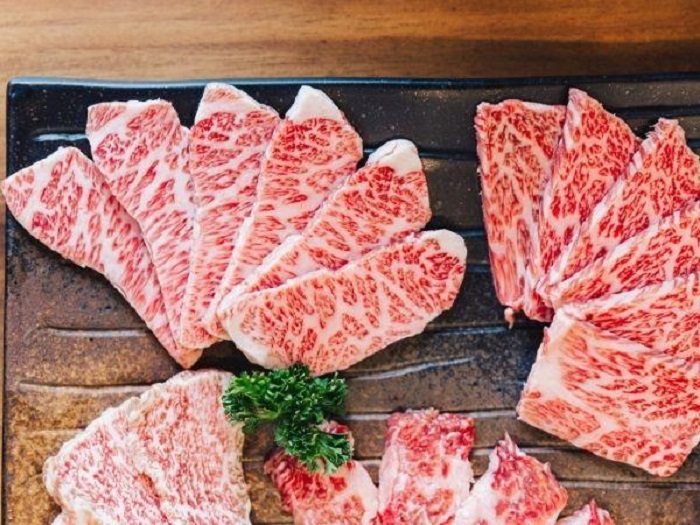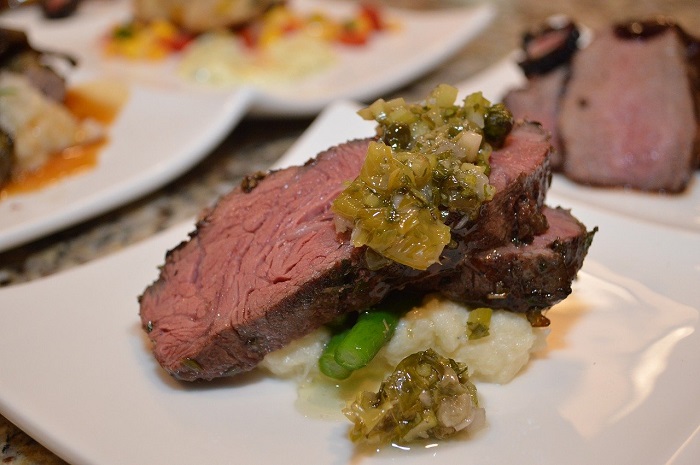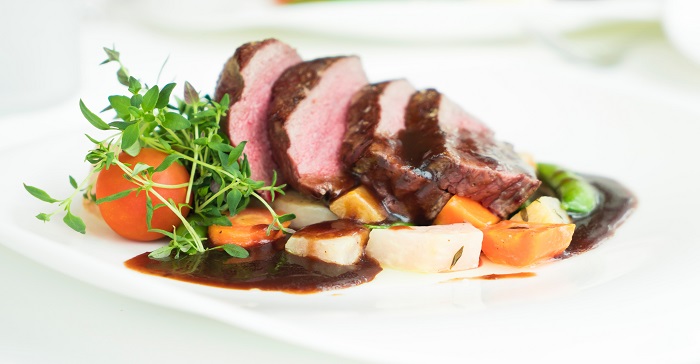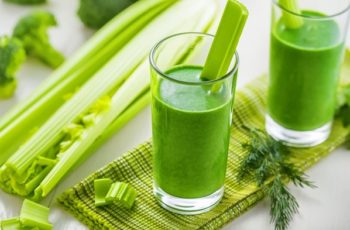Table of Contents
How to Cook Wagyu Steak? Good Cooking Tips in 2021
The beef industry in the United States is growing by leaps and bounds as more people are looking for a healthier alternative to chicken or fish. Wagyu steak, which comes from Japanese cattle breeds that produce an exceptionally rich-tasting meat, has been trending recently due to its high cost and delicious taste.
In this blog post, we will be discussing how to cook Wagyu steak with some cooking tips you may not know about. Cooking wagyu steaks can be a daunting task for anyone who hasn’t done it before because they are expensive and their flavor is very different from other meats like chicken or fish. We hope these cooking tips will help you prepare your next meal!
What is Wagyu Steak?
A wagyu steak is a variety of beef that comes from the Japanese Wagyu cattle breeds. In addition to Japan, Wagyu beef can also be found in Australia, France, Germany and the United States where it has been growing in popularity due to its rich flavor and high nutritional value. The exact definition of what constitutes as a wagyu steak varies from region to region.
However, all wagyu steaks have some common characteristics: they are low in fat content (between 3-5%) and moderate in protein and calories (90-110g). They are also known for their tenderness because the muscles used for movement such as the neck or hindquarters contain less marbling than usual leading to an overall lower intramuscular fat content of about 20-30%.

Wagyu cattle are thought to be some of the healthiest beef breeds in the world because they have been selectively bred for 300 years. The Wagyu breed has not been genetically modified or manipulated drastically unlike many other animals involved in agriculture due to concerns about consumer safety and food security.
Unlike regular meat from butcher stores, wagyu is pinker since it comes from a different bloodline then most commercial meats.
The following table compares three types of Wagyu beef used commonly today: A5, Kobe and American Style:
What Makes Wagyu Steak Taste So Good?
There are several factors that contribute to a good tasting steak; however, when preparing wagyu, one of the biggest factors affecting flavor is fat. Wagyu steak has a much lower fat content than other types of meat and there are many reasons for that which will be discussed further.
Wagyu beef contains less marbling than most commercial meats making it leaner and healthier. The lack of fat in wagyu means that it does not have much flavor from within; thus, many chefs choose to treat it with different kinds of marinades before cooking to add more taste.
Another technique used by chefs is coating the steaks in salt and butter or oil before grilling them over high heat which can also make the meat taste better. If you do this at home then remember to remove any excess salt after you’re done cooking.
Wagyu beef is also known for its tenderness because the muscles used in movement such as the neck or hindquarters contain less marbling than usual leading to an overall lower intramuscular fat content of about 20-30%. The lack of intramuscular fat leads to a more uniform and consistent texture throughout the entire cut which makes it much easier to cook without over cooking any part of the meat.
This makes wagyu steak very popular among chefs since they can serve steaks with a reliably high quality and consistency at their restaurants.
While plenty of research has been done on what makes Wagyu Beef so delicious, there is one mystery behind this incredible taste that scientists have yet to solve: no-one knows why people love the taste of wagyu so much!
How to Cook Wagyu Steak? Steps by Steps on Cooking Wagyu Steak

Step 1: Thawing Steak
Wagyu steaks should be cooked after they are completely thawed. Do not cook a frozen steak because you risk ruining the texture of it and possibly overcooking certain parts before others since freezing results in uneven distribution of heat throughout the meat (due to contraction of some muscle fibers). Thawing can be done using various methods depending on how far ahead you intend to use the meat.
Many people choose to put their wagyu steak in room temperature water for about 30 minutes which is useful if you do not plan on cooking that same day but have your meal scheduled sometime later in the week. If you want to serve it as soon as possible, then we highly recommend using dry ice or wet towels.
Once your meat is thawed, the next step is to season it and prepare it for cooking.
Step 2: Pre-Seasoning Your Steak
To get the best results from seasoning a wagyu steak, we highly recommend using a wet marinade or sauce as opposed to dry spices. The reason behind this recommendation is that dry spices generally need longer exposure times to really meld with the meat; however, since you are only planning on grilling your steak for about 3 minutes or so at high temperatures.
Then it is very likely that the surface of your wagyu will not have enough time to absorb much flavor from dry rubs. On the other hand, because you should be applying sauces right before cooking, you can use just about any marinade you like whether it be a simple combination of olive oil, Worcestershire sauce and salt or a wet marinade containing things such as soy sauce and garlic.
Step 3: Grilling
We cannot stress enough how important it is to only grill your wagyu steak at high temperatures. Medium rare steaks should ideally be cooked over very high heat (about 600 degrees). To ensure that all parts of the meat get enough heat for even cooking, we recommend using two grills rather than one large one unless you have an especially wide model.
The reason why we recommend doing this is because the size of your steak will determine how long it takes to cook on each side; for example, if you cook a 1″ thick steak over high heat, then it will take about 3 minutes to cook on the first side and another 2 for the second whereas if your steak is cut half as thick or less then it will only take about one minute per side.
Because of this, you might notice that your steak takes longer to cook on one side than the other; moreover, cooking times can be rather unpredictable since they are affected by factors such as the thickness of the meat or how well done you like it.
For even more perfection, we recommend using a meat thermometer to measure each part of your wagyu steak so that you know when exactly it’s ready for consumption. Inserting a probe into any part of the meat should not affect its flavor or texture since the heat and marinades should have already been absorbed by the steak.
If you do not have a meat thermometer, then another way to test if your steak is done is to touch it with your finger. For medium rare, you will feel very little resistance when touching whereas for medium, there should be some give but still noticeably firm.
You can also poke the surface of your wagyu with your finger and see how easily it springs back into place; if it takes more than 10 seconds to regain its shape then it’s probably overcooked.
Step 4: Resting
Once you take your wagyu off the grill, allow it to rest under aluminum foil for at least 5 minutes (for larger cuts) or up to 20 minutes (for smaller cuts). During this time, the heat will continue to distribute throughout your steak and its temperature will rise by another 5 degrees to a total of 15-20. If you touch it, then it should feel even firmer than before but still soft enough for cutting.
Step 5: Cutting
After resting your wagyu steak, cut through it horizontally with a sharp knife instead of cutting vertically in order to minimize the amount of juices that are lost from the meat. Although these steps seem like common sense when cooking any kind of meat, they are especially important when working with wagyu due to their leaner nature and less forgiving cooking times.
Cooking mistakes such as overcooking generally have more severe consequences when cooking wagyu as they can dry it out completely and turn what would have been a culinary delight into something that tastes like shoe leather. In the end, we hope that these guidelines and tips will help you cook better tasting steak, regardless of the cut.
As always, we welcome your feedback and suggestions for future articles so let us know what you think below!
Above is Steps by steps on How to Cook Wagyu Steak. Now, Let’s move to Tips and guides on Cooking Wagyu Steak.
Tips and guides on Cooking Wagyu Steak.
Wagyu is considered as the most premium beef in the world. The quality and marbling of wagyu is what makes it stand out from other cuts. Note, however, that not all steaks labeled as “wagyu” are necessarily derived from those cattle; some countries have been known to substitute domestic breeds for real wagyu when importing them because they can be expensive at times.
When shopping for wagyu (real or fake), you should know a few things about how to cook it properly according to its grade so that you get the best value for your money.
4-5 oz med rare 140-150 degrees / 5-6 oz medium 150-160 degrees / 8 oz medium 160-170 degrees Eat it with: A cold beer is a good match for wagyu due to its richness.
1. How to choose good Wagyu Steak?
First of all, you should consider your location and what other kinds of meat are available to you in your area. If you live in a city with multiple Japanese restaurants then it’s likely that they will carry wagyu because of the cultural influence from Japan. Additionally, if there is a local farmers market or butcher shop that offers locally sourced meat then they might also carry some wagyu cuts.
Otherwise, many online stores such as Snake River Farms offer both domestic and imported cuts of real Japanese wagyu (the species Tajima) for sale around the world.
As stated before, it is important to note that not all steaks labeled as “wagyu” are necessarily derived from those cattle; some countries have been known to substitute domestic breeds for real wagyu when importing them because they can be expensive at times. That is why it’s important to read the label and ask questions about where your steak actually comes from.
As you can see, there are several things that you should look out for: Producer : When looking at Japanese wagyu, producers such as Kobe Beef and Matsusaka are considered to be the best. However, they’re both located in Japan which means that shipping costs will be higher than with imported cuts of beef from other countries such as Australia or the United States.
Grade : Wagyu can range anywhere between 1-5. The higher the grade then generally the more marbling (fat) and better taste it will have. This also means that more fat will be lost during cooking so you should take that into account when deciding on the cut. Of course, there’s no reason to buy a 5-grade wagyu if it is too fatty for your tastes; grade 1 and 2 are generally fine if the one you like does not come in a higher grade.
2. When should I season my Wagyu steak?
Before or just after cooking. Seasoning a wagyu steak too early will cause it to become dry when it cooks as the salt pulls out moisture.
Remember that marbling (fat) is what makes the meat tender and flavorful, so don’t be shy about seasoning your beef in order to fully appreciate all that tasty fat.
3. How long should I cook my Wagyu?
Wagyu is generally cooked slightly longer than other steaks even if they are of similar grade or cut because of its leaner nature; this includes both domestic and imported cuts from Japan such as Kobe Beef and Matsusaka. The most important things here are temperature control and knowing where exactly medium-rare falls on the chart for your preferred cut of meat (see below).
Gauging doneness by temperature is not the only method for determining if your wagyu is ready to eat. The best way of gauging the doneness of this meat without using a thermometer is to use a “finger poke test.” Take out the steak and poke it with your finger. If it feels soft than you are good to go, but if it’s hard then you should cook it some more.
If you prefer a medium cut, here are the temperatures that mean what: 3-4 oz = 150 degrees 5-6 oz = 160 degrees 8 oz+ = 170 degrees
4. What do I pair Wagyu Steak with?
Wagyu pairs well with most food so try just about anything and everything. That being said, some foods can bring out the delicious marbling and beefy flavor of wagyu the best. The following are some suggestions based on personal experience:
Aged Cheddar Cheese: Improve the taste without covering up its distinct flavor by pairing aged cheddar cheese with your steak for just about any cut.
Mushroom Soup: Serve this soup before, during or after cooking your steak to add depth to both the meat’s taste and texture.
Red Wine: All red wine matches perfectly with high-grade wagyu so feel free to sip a glass while munching on a high quality cut of steak.
A perfect example of what I mean is this New York strip that was grilled at 275 degrees until it reached an internal temperature of 110 degrees. It was then basted with the juice from a cremini mushroom and served with a glass of cabernet franc.
5. Where to buy Wagyu Steak?
If you’re tired of your supermarket’s ground beef, consider making the switch to wagyu. You can find it at restaurants or specialty stores but if you really want the best then try buying directly from a farm or producer.
Don’t be fooled by retailers that say they sell “Kobe-style” beef when the product actually comes from Australia; Kobe Beef comes only from Japan and is in a league of its own compared to other breeds and cuts of foreign beef simply because it has not been mass produced like most domestic cuts here in America.
6. How is Kobe Beef different than Wagyu?
Kobe beef comes from three specific breeds whereas wagyu refers to any high quality Japanese steak that has been massaged, thereby increasing its marbling content . This process makes Kobe beef more succulent and tender than wagyu but its texture is usually firmer than wagyu (it also comes from cattle that are generally older than 3 years).
Kobe Beef, on average, contains about 5% less fat and 50% more protein when compared to other breeds of beef. It is also known for having a buttery consistency due to the percentage of monounsaturated fats it contains; however, this trait is not exclusive to Kobe beef because it can also be found in other high quality cuts like wagyu or even T-bone steaks .
7. The origin of Wagyu and Kobe Beef?
Wagyu refers only to Japanese breeds whereas Kobe refers specifically to cows raised in Hyogo Prefecture in Japan’s Kansai region. Kobe is famous for its fatty, melt-in-your mouth texture and sweet aroma .
Due to the cost of mass production, Kobe Beef can only be found at high-end sushi or steak restaurants whereas Wagyu is readily available in many supermarket meat sections. A
nother reason for this disparity in distribution is that Kobe cattle have been bred so extensively that their numbers are dwindling, making it harder to find than wagyu beef; however, if you ask a restaurant that serves Kobe beef whether they also serve wagyu then there’s a good chance they will say yes.
8. What to serve with Wagyu Steak?
Try pairing wagyu with any of the following:
Asparagus: Asparagus is delicious, nutritious and pairs well with almost anything. It also makes a great complement to your steak because it can add texture without hiding its flavor.
Baby Artichokes: Baby artichokes are soft in texture and buttery tasting so I recommend sautéing them for a few minutes before gently squeezing out their insides onto your steak to add another dimension to its taste.
Sweet Corn Sautéed in Butter: If you like corn on the cob then try sautéing sweet corn kernels instead for an extra layer of sweetness when paired with your steak or just eat it alone as a side dish.
Baked Potato: A baked potato is a timeless side dish to any meal and its texture makes it the perfect accompaniment for wagyu (or any other cut of steak).
If you prefer hash browns then simply slice your potatoes into cubes, add an egg and fry them until crispy. When done, drain off the excess oil by placing them on a paper towel. Season with salt before serving.
Parsnips: These delicious vegetables are often overlooked but I think they go well with almost anything, especially steaks that have been basted with a thick sauce or glaze .
They also make a great alternative to mashed potatoes because they can be turned into chips after being cleaned and sliced and fried in hot oil at 350 degrees until golden brown.
Sautéed Mushrooms with Butter: This is a safe alternative to steak sauce and can be used as part of a classic mushroom meal or just on its own.
9. When selecting the best cut?
The most important factor when choosing a higher end cut is that it has a high degree of marbling, which comes from the fat content in cows raised for wagyu and Kobe beef . Marbling makes meat juicy and tender, not to mention delicious; so, if you’re buying steaks then choose cuts that have white streaks throughout them rather than one solid color.
10. How to cook delicious Wagyu Steak?
Cooking time is really important things in enjoyment of your steak. If you are not happy with how long it takes, just think back to when you first started grilling and had no idea about the importance of temperature control; and that was before understanding the affect on doneness.
Many people will still grill over high heat because they think they can cook a better steak than the chef at their favorite restaurant, but they never have tasted a proper steak cooked at low and slow temperatures. There is an art to cooking Wagyu Steak properly. The timing for your steaks depends on the thickness, degree of fat cover or marbling, weight and desired rareness.
If you do not know this information you should ask your butcher or the steakhouse you are ordering from.
The thickness is important because it determines how fast your meat will cook and this ultimately controls its doneness, but most importantly it will determine if fat overcooks or does not render properly. A good rule of thumb for cooking Wagyu Steak is: use a lower temperature, i.e., closer to 225° F (107 degrees C) for thinner cuts than those which require higher temperatures, over 400° F (205 degrees C).
Always bring some type of heat diffuser with you to the beach or a picnic so that you can control your grill better; otherwise it is nearly impossible to maintain low temperatures at high altitudes! It is best to choose cuts from the short loin and T-bone sections of the cow because these are the best marbled and thickest cuts.
If you want to be extra careful about how your Wagyu Steak will cook, then use a meat thermometer. This means that you can not only determine when it’s done but also stop the cooking early or let it go a little longer if necessary. We suggest a digital thermometer with an alarm; this is so much easier than trying to check regularly with an instant read meat thermometer.
A probe style thermometer would be useful for things like smoking meats but too unreliable for grilling; there is just too much evaporation from steaks during cooking due to their high fat content, making reading difficult on many grill tops. However, the probe style thermometer would be useful for steaks cooked in a smoker or similar high humidity environment.
When using digital meat thermometers try to insert it at a right angle to avoid hitting fat or bone; this can easily throw off your cooking time and temperature readings. Also, if you are going to use an instant read thermometer make sure that it has an alarm with sounds like beeping so that you do not miss the moment when your Wagyu Steak is at its perfect temperature!
We suggest using a thicker steak for grilling than one normally might because thinner steaks take less time and have less of those desirable caramelized grilled flavor marks on them. A good indication of doneness is when there is no more pinkness at the center; this is particularly true with high fat marbled steaks that have been grilled rare and are very juicy.
Juiciness is determined by how long it takes to reach the perfect temperature for a steak, which varies between individual cuts. This is why you need to know the thickness of your Wagyu Steak before cooking it so that you can control the time and temperature when grilling!
Wagyu Steak Color Guide: Medium Rare=Darker Pink; Medium=Bright Red (probably too rare); Medium Well=No Visible Pink or Red Anywhere on Meat.

Common question related with How to Cook Wagyu Steak FAQs
1. What is Wagyu?
A: Wagyu are breeds of cattle (Japanese Black, Japanese Brown, Japanese Polled) that have been raised for centuries in Japan. Their meat is very tender and flavorful which makes it ideal for high-end steakhouses where the cost of a meal can be as much as $300 per person.
2. What’s the best cut to choose?
A: If you’re buying steak then definitely try wagyu ribeye because it’s one of the most popular cuts and always my personal favorite. It’s also thick so if you’re cooking at home then make sure to cook both sides for longer than 5 minutes each side, depending on how thick they are.
3. How do I prepare wagyu steak?
A: Wagyu and Kobe beef steaks are best cooked on a very hot grill or pan. They become more tender when cooked slowly but if you prefer medium rare then cook them for no longer than 5 minutes on each side at 400 degrees. Wagyu steaks are also delicious after being stewed in wine or soy sauce.
4. What’s the best seasoning to use?
A: For those who don’t like eating their meat dry then try applying a thick marinade, shake on some seasoning and baste it with melted butter instead of frying it. If you want something spicy, there are plenty of jalapeno pepper recipes on Google that you can use to add flavor.
5. What else should I pair wagyu with?
A: The trick is to cook your steak with an ingredient or two, which will complement it without overpowering its flavor. For example, try pairing it with sweet corn sautéed in butter and black pepper or spicy grilled jalapeño peppers and even asparagus.
6. How to keep Wagyu Steak?
A: Wagyu steak s can be kept unfrozen for up to 15 days if wrapped tightly in plastic and stored at 0 degrees Fahrenheit (or -18 degrees Celsius).
It’s best to buy fresh wagyu which has never been frozen rather than previously frozen. If you do buy previously frozen then defrost it slowly in the refrigerator before cooking just to make sure that there are no ice crystals formed in the center of your meat.
7. How long does Wagyu Steak last?
A: When prepared and stored properly, wagyu steaks will last about 1 week while raw pieces of meat can keep for a month or two.
8. What kind of cut should I choose?
A: The thicker your steak is the longer it will take to cook but the juicier and more tender it will be. I tend to like my steak medium rare so if you’re buying a thick cut then 6-7 minutes on each side should do the trick while thin pieces can be cooked for as little time as 1 minute per side.
9. How long can Wagyu Steak last in fridge?
Wagyu steaks, when stored properly in your freezer, can last for about 5 months or longer within its original packaging. If you bought yours from a store and wish to keep it for future use then wrapping it tightly with plastic wrap before freezing it is recommended.
After defrosting the meat however, keep in mind that it’s never a good idea to refreeze it again.
10. What is Kobe Beef?
A: Kobe beef or Wagyu (Wa meaning Japanese and gyu meaning cow) is a breed of cattle that are raised in the Hyōgo prefecture of Japan. The region has partially volcanic soil which makes grazing easier for the cows, allowing them to eat fresh grass up to 14 hours a day.
It’s fat-marbled meat is highly prized by gourmets which makes its price one of the highest amongst all meats on earth; if sold retail, wagyu steaks can go as high as $500 per pound (€372.50 at current exchange rates).
Conclusion
Cooking Wagyu is a great way to enjoy the best of both worlds. You can use it for sashimi or cut up into thin slices and marinate in soy sauce, ginger, garlic, sake and sugar before grilling over hot coals.
When cooking Wagyu steak at home with your own grill you should be aware that this meat has a lower fat content than beef so when cooking on high heat make sure not to overcook it as this will dry out the meat quickly. If you’re planning on having guests over but don’t have enough space in your fridge then try using an ice chest filled with cold water to store any leftovers after dinner!
We hope you’ve found the answer for How to Cook Wagyu Steak? and this article useful in your search for cooking tips and tricks. Wagyu steak is tender, flavorful, and the perfect dish to prepare on a special occasion. Follow our guidelines below to make sure it comes out perfectly!
If you have any questions about how we prepared this delicious meal or want more information about other mouthwatering recipes, please don’t hesitate to contact us.
Read more:

